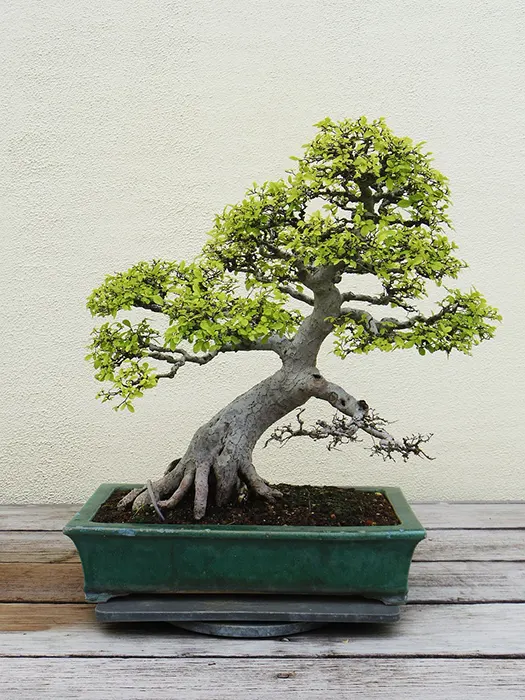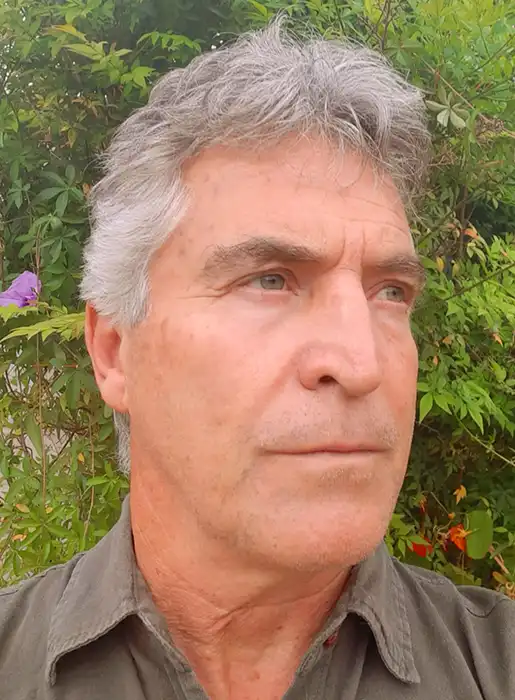How Do I Revive My Chinese Elm Bonsai?
The Ulmus parvifolia, more commonly known as the Chinese Elm, is a beautiful tree in nature. It is a tall and gracious tree. It also makes a beautiful Bonsai tree. Over time and with a lot of patience, love, and attention, you can grow a magnificent Chinese Elm Bonsai tree.
But what to do if my Chinese Elm Bonsai tree looks unwell, losing leaves, or drying out. How can I revive my much-loved bonsai tree?
Image courtesy of Ragesoss | License Details
Symptoms And Possible Causes
Just looking at a bonsai Chinese Elm Bonsai tree, you can sometimes see that it is not happy. When this occurs, you have to act quickly or stand a chance to lose the tree. To save the tree, it is important to find out what is causing the problem. There are a few tell tales that can indicate that something is wrong with your elm:
Discoloration, Ragged Leave Edges, or Falling Off of the Leaves
The Chinese Elm is a deciduous tree. So during autumn, it is natural that the leaves discolor and fall off. Any other discoloration or deforming of the leaves out of the normal season may indicate that there is a problem. Leaves wilting or yellowing can be caused by a lack of sunlight, a lack of watering or malnutrition. It can also be caused by overwatering. Re-potting will be the solution.

Visible Spots
White or red spots on the leaves and bark normally show that there are bugs, spider mites or other pests present. All infected leaves must be trimmed off, and insecticides can be used to kill the pests.
Branches Being Brittle Or Feel Dry
If there is no flexibility in young branches, or they break with pressure instead of bending, the tree is not getting nutrition through the roots. Too much fertilizer can also cause the tree to die. Overwatering can cause root rot, and gnat larvae and other pests can eat the roots if roots are too wet. Dead branches must be cut off as they can carry disease. Re-potting will be necessary.
Roots Abnormal
With overwatering, root rot can set in. There would then not be enough healthy roots to transport the nutrients from the soil. The roots can also be dried out from lack of water. The tree can also have outgrown the size of the container, and the tree can be rootbound. The tree has too big a root system, and there is not enough nutrient soil. If the roots are circling around the main roots, it is time for repotting.
Shrunk Branches
When you notice that the branches on your Chinese Elm bonsai tree are shrunk, and the leaves are falling out of season, it indicates that there is a lack of water and/or nutrition. Water more regularly and add nutrients to the water when you are watering. Be careful of putting too many nutrients in as this can also have a negative effect on your tree’s health. You can also change the soil, which might not have enough nutrients anymore. Repotting is the answer.
Trunk Abnormal
A Chinese Elm Bonsai tree can also grow canker growths on the trunk or branches. Swollen bark forming unsightly knobs normally indicates that the tree has this problem. This can also take away from the beauty of your Elm Bonsai. This can be cut out with a branch cutter and smeared with cut paste to promote healing.
A Loose Tree
A loose tree in a pot is an indication that you have problems with the roots. You will have to remove the tree from the pot to see what the problem is. Repotting the tree will be necessary.
Common Mistakes Made
A Chinese Elm Bonsai tree can not survive on its own. It depends on you to give it the right amount of water, the right amount of light, the correct nutrient soil, and the correct container. The most common mistake made by Bonsai tree owners is that they forget to water their trees. You can also give the tree too much water. You must also not put an outdoor tree, like the Chinese Elm, inside the house where there is insufficient light. The elm needs enough natural light. People sometimes use the wrong container (too big or too small) for their Chinese Elm Bonsai Tree.
Tools Required To Revive Your Chinese Elm Bonsai Tree:
- A new Bonsai pot if the roots are root-bound.
- Branch cutters to cut dead branches or remove cancer growths from the trunk.
- Trimming scissors for discolored, misformed, and ragged edge leaves.
- Copper binding wire to tie the tree to the pot.
- Mesh to cover watering holes.
- Sphagnum moss and good Bonsai potting soil.
- The correct insecticide for leaves with spots and misformed leaves, if that is the problem.
- Cut paste to help with the healing of the cut branches and trunk.
- Bucket with water to soak the newly potted tree in.
How Can I Revive My Chinese Elm Bonsai Tree
To save your struggling Chinese Elm Bonsai tree, you can follow these steps:
- Determine the cause of your suffering tree by comparing the symptoms.
- If the leaves are wilting and the discoloration is because of a lack of water, you can place the Chinese Elm Bonsai tree in its pot in a container filled with enough water to cover the watering holes. Trim all discolored leaves, but it is important to leave a few of the healthiest leaves on to keep on producing nutrients to transport to the roots. If the branches and leaves recover, you are lucky, and the tree is saved. If not, you must take the following steps to see if there is any hope.
The following steps are for all the other symptoms as well:
- Remove the elm from the bonsai pot with care. Inspect it carefully to further determine what the cause is. It helps to poke something into the draining holes to loosen the roots and soil from the pot. Take hold of the trunk and pull softly until the elm is free.
- Use chopsticks or a small bonsai rake to untangle the roots.
- Smell the roots. Root decay has a rotten smell, and the roots will be mushy to the touch. Using a pair of pruning scissors, you must cut all the rotten roots out. If the tree was root bound, you must trim away any excess roots.
- With the pruning, scissors cut away all discolored and misformed leaves. You must cut away all dead branches and cancer knots on the trunk with the branch cutter. Brush cut paste on all wounds for better healing.
- Put your tree back in the cleaned bonsai pot, or select a bigger pot if the bonsai was root-bound. Fill about a third of the pot with Sphagnum Moss. Place your tree with the front section of your tree facing to the front of the pot. Move the tree from side to side and backwards and forwards until you get its best position. Bear in mind that with the branches or trunk cut, the style of your Chinese Elm Bonsai tree may have to change.
- You may have to secure the tree to the pot using wire through the watering holes.
- Cover with good bonsai soil using chopsticks to compact the soil around the roots.
- Put the potted tree in a bucket filled with water. Wait till the bubbles stop coming to the surface. This means that the soil is saturated with water.
- Place in a place with lots of natural light, but not directly in the sun. The area must also be well air drafted.
- Water regularly, but do not overwater. A good guide is to water till the water seeps through the water holes. Then wait till the soil is a little dry on top. Watering every night in summer is a good rule of thumb. Wind, sun, and temperature will determine how often you must water.

How Long Will The Chinese Elm Bonsai Take to Heal?
To revive a Chinese Elm is a long process. Fortunately, Elms bud quite easily from very old wood. Therefore it can take heavy pruning and still survive. It can take two to three months to generate new leaves and branches. But in time, and with the necessary love and attention, it will look great again. Maybe a bit different but still beautiful.







